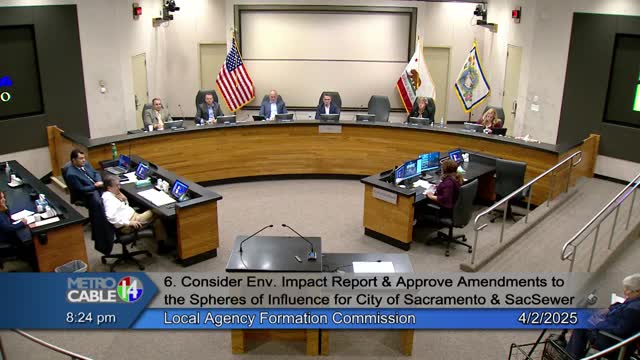Local Labor Union backs Sacramento development project despite community traffic concerns
April 15, 2025 | Sacramento County, California
Thanks to Scribe from Workplace AI and Family Portal , all articles about California are free for you to enjoy throughout 2025!

This article was created by AI using a video recording of the meeting. It summarizes the key points discussed, but for full details and context, please refer to the video of the full meeting. Link to Full Meeting
Doyle Radford, the business manager of Construction and General Laborers Local 185, expressed strong support for a development project presented by Mr. Griffin and Mr. Adves. Radford emphasized the project's potential benefits for local labor, noting that it would provide substantial work opportunities for the union's over 6,000 members. He highlighted the project's robust scope, which includes infrastructure and concrete structures, and urged the commission to support it, citing the developer's adherence to industry standards.
In contrast, Fabian Lara, a long-time resident of Natomas, voiced significant concerns about the project's impact on local traffic and safety. Lara recounted personal experiences with near-fatal accidents in his area, arguing that the project would exacerbate existing traffic issues on the Garden Highway, which cannot be expanded. He urged the commission to vote against the project, citing potential dangers to residents.
Rosie Yacoub also opposed the project, arguing that it would contribute to unnecessary development in an area already facing challenges with vacant warehouses. She pointed out that many existing warehouse spaces remain unoccupied and questioned the need for additional development that could increase traffic and safety risks for residents, particularly children. Yacoub called for a reevaluation of the region's development priorities, emphasizing the need to focus on community well-being rather than economic gain.
The meeting continued with additional public comments, including remarks from Jeffrey Peterson, who echoed concerns about the implications of increased truck traffic in residential areas. The discussions highlighted a clear divide between those advocating for economic development and those prioritizing community safety and existing infrastructure challenges.
As the meeting progressed, the commission faced the challenge of balancing economic growth with the needs and safety of local residents. The outcomes of these discussions will likely influence future development decisions in Sacramento County, as community voices continue to shape the dialogue around local projects.
Converted from LAFCo - 4/2/2025 meeting on April 15, 2025
Link to Full Meeting
Comments
View full meeting
This article is based on a recent meeting—watch the full video and explore the complete transcript for deeper insights into the discussion.
View full meeting